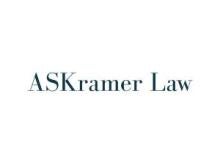At the beginning of this series, I mentioned briefly that taxpayers can use tax-loss harvesting approaches in tandem with a number of investment strategies, which we will go into in more detail in Part III. Many of these investment strategies specifically take into consideration the perils of the wash sales rule. This is an important topic in planning for tax-loss harvesting. First we will look at the related technicalities in some detail, along with the precise definition of “substantially identical” stock or securities that can trigger it.
What is the wash sales rule?
The wash sales rule prevents taxpayers from reporting “artificial losses” by selling stock or securities at a loss at the end of one taxable year and repurchasing the same or very similar securities shortly thereafter. Internal Revenue Code (Code) Section 1091 prevents taxpayers from taking losses on the sale of stocks or securities (collectively, “securities”) if they acquire “substantially identical stock or securities” “within a period beginning 30 days before the date of such sale or disposition and ending 30 days after such date” (the 61-day period).[1] The wash sales rule is based on statutory rules and definitions.
To Whom does the wash sales rule apply?
The wash sales rule applies to all taxpayers, with the exception of dealers in stock or securities.[2] It applies to losses sustained in the ordinary course of business and for investment purposes. For the wash sales rule to apply, the taxpayer must have sold stock or securities at a loss and acquired substantially identical securities in a taxable transaction or entered into a contract or option to acquire substantially identical securities.
Which taxpayer accounts do the wash sales rule cover?
The wash sales rule is applicable across all accounts controlled by a taxpayer and the taxpayer’s spouse (if applicable). Controlled accounts also include the taxpayer’s tax-deferred accounts, such as 401(k) plans and IRAs. As a result, a taxpayer cannot avoid application of the wash sales rule by selling stock or securities at a loss in one controlled account, and then buying it back in another controlled account.
When does the wash sales rule kick in?
The wash sales rule applies to the acquisition of substantially identical stock or securities and contracts or options to acquire substantially identical securities during the 61-day period.[3] It does not apply to other asset types, such as futures contracts, real estate, or foreign currency. If a taxpayer attempts to claim a tax-loss during this 61-day period, the wash sales rule kicks in, and the loss is denied. It is not deductible.
What is meant by “acquires” substantially identical securities?
The wash sales rule comes into effect if a taxpayer acquires or enters into a contract to obtain substantially identical securities in a taxable transaction where the entire amount of gain or loss is recognized. If the taxpayer receives the securities as a gift or through a non-taxable transaction, this is not an “acquisition,” so the wash sales rule does not apply.
Does the wash sales rule apply to gain transactions?
No. The wash sales rule only applies to loss transactions, not gain transactions. Taxpayers can always sell securities at a gain and immediately repurchase the same securities.
How are the terms “stock or securities,” “stock,” and “securities” defined for purposes of the wash sales rule?
Neither the term “stock,” nor the term “securities” are defined in Code Section 1091, which sets out the wash sales rule. As a result, we need to look at how stock or securities are defined or referred to elsewhere in the Code. We see that references to stock and securities have consistent meanings in other Code sections.
The term “stock” always refers to shares of stock in an entity taxed as a corporation[4], with a “corporation” being defined for these purposes as an association, joint-stock company, or insurance company.[5] When stock is not defined in the Code, it generally refers to “a permanent interest in the corporation's equity,” that is, an “underlying asset” of the corporation.[6]
The term “securities” always refers to notes, bonds, debentures, and other evidence of indebtedness. The meaning of securities is expanded from this standard definition in certain Code sections. Take for example, Code Section 1236(c). It defines a security for purposes of a securities dealer’s investment account to include “any evidence of an interest in or right to subscribe to or purchase” any shares of stock or evidence of indebtedness.”
Nowhere in the Code, the legislative history, Treasury Regulations, or other government guidance is “stock or securities” defined as anything other than shares of—or interests in—stock in a corporation; evidence of indebtedness; or a contract, right, option with respect to stock or evidence of indebtedness, and an interest in (or right to subscribe to or purchase) any of the other items.
What is meant by “substantially identical stock or securities”?
We have just looked at the definitions of stock and securities, so let’s now turn to what is meant by the phrase “substantially identical.” Substantially identical is not defined in Code Section 1091 or in the Treasury Regulations. Rather, the phrase is applied according to the facts and circumstances of each taxpayer’s situation. It covers something less than a precise equivalence between the sold and purchased securities so, by definition, there are slight differences between them. In other words, “substantially identical” is not limited to securities with the same CUSIP[7] number: it is a broader concept.
In considering whether certain stocks or securities are substantially identical, a taxpayer should aim to ask and answer the following materiality questions:
- When were the securities sold and when were they purchased? Within the 61-day period or outside of that period?
- Is there a material difference in the timing of dividend or interest payments due for each security?
- Do the securities differ substantially in any material features? For example, are they the same or different classes of shares from the same issuer?
- With respect to debt securities issued by the same issuer, how much do the yields differ?
- In the case of debt securities, is there a difference between the recourse or nonrecourse nature of the debt?
- in the case of recourse debt securities, are there different obligors?
- in the case of debt securities, are there different payment expectations based on collateral or creditworthiness? Market risk? Credit risk? Liquidity? Or leverage?
How does the wash sales rule apply to investment portfolios if a taxpayer also engages in tax-loss harvesting?
In Part III of this series, we will be reviewing specific investment strategies typically used when seeking to employ tax-loss harvesting methods; but there are certain considerations to bear in mind in seeking to avoid the wash sales rule—and these are agnostic across all portfolios.
To harvest tax losses, a taxpayer strategically sells depreciated securities and (typically) replaces them quickly with similar but not substantially identical positions to avoid undermining the taxpayer’s overall investment objectives. This requires a careful balancing act for the taxpayer to harvest losses without getting caught up in the wash sales rule.
Taxpayers who maintain a securities portfolio will likely choose to replace loss positions with similar—but not substantially identical—securities to continue to track their investment objectives or benchmark index (on which the securities portfolio is premised) during the 61-day period. Once that period has expired, however, a taxpayer might—but need not—sell the replacement securities after the 61-day period expires to re-acquire the original securities that had generated the loss.[8]
Based on the factors I’ve set out above, let’s consider whether Class A Google Shares (GOOGL) are substantially identical to Class C Google Shares (GOOG). Both classes of stock are members of the S&P 500 index, with GOOGL representing Class A shares that incorporate voting rights into share ownership, while GOOG represents Class C shares that do not have voting rights. Is this difference enough to make Class A and Class C shares similar but not substantially identical? Although there are differences in voting rights and therefore corporate control, they both represent the same ownership rights and economic rights in Alphabet Inc.
An argument could be made that voting rights are a significant enough difference to make that GOOGL (Class A) and GOOG (Class C) shares not substantially identical.[9] In the context of mutual funds, for example, the smallest differences in corporate rights or structure are enough to treat shares as not being substantially identical to shares in another mutual fund. With this stated, though not free from doubt, it is quite possible that the government would treat Class A and Class C shares as substantially identical.
Does the wash sales rule apply to index funds and mutual funds?
The answer to this question depends upon the specific facts and circumstances. Selling an S&P 500 index fund and buying a Russell 1000 index fund, for example, should not trigger the wash sales rule. These funds consist of different securities that replicate different indexes.
Selling one index fund for another fund that mirrors the same index might be considered substantially identical in some circumstances but not in other situations, even if the two mutual funds track the same index.
Mutual funds typically have customized investment strategies and portfolios that are actively managed; they do not trade on an exchange; and they are not priced throughout the day. Rather, they are only priced after the close of the trading day based on net asset value. Based on factors such as these, mutual fund pricing is not likely to mirror the pricing of another mutual fund or an underlying portfolio or benchmark index.
One place where the IRS attempted to address substantially identical mutual fund shares is in publication 564, Mutual Fund Distributions for Use in Preparing 2009 Returns. Although this publication was obsoleted in 2011, it makes a comment about substantially identical mutual funds that is still instructive. The IRS noted that “ordinarily, shares issued by one mutual fund are not considered to be substantially identical to shares issued by another mutual fund.”
Factors to consider in determining whether the wash sales rule applies to mutual funds include differences in index position weightings, differences in fund management, and whether the fund is an open-end or closed-end fund.
Analysis that considers all of the facts and circumstances is required to determine if the positions are substantially identical in all material respects.
Does the wash sales rule apply to exchange-traded funds?
Possibly. Exchange-traded funds (ETFs) and mutual funds designed to replicate an index or portfolio of securities are structured differently. ETFs are not actively managed; they are traded on an exchange just like shares of stock in an individual corporation; ETF pricing closely tracks the underlying index or portfolio; and the price of an ETF share is expected to closely track the securities making up its portfolio with a small tracking error. ETFs can be taxed as flow-through entities or as corporations. Although the question is not free from doubt—and the answer might vary based on other factors—one S&P 500 ETF is likely to be treated as substantially identical to another S&P 500 ETF from another issuer. Accordingly, it is possible that the wash sales rule will apply if a taxpayer sells one ETF and immediately buys a different ETF tracking the same index during the 61-day period.
Which facts and circumstances may determine whether ETFs or mutual funds are “substantially identical”?
Relevant facts and circumstances might include the following:
- Are there differences in the underlying assets or indices?
- Are there differences in investment strategies?
- Does the investment strategy include securities lending transactions?
- Are cash holdings automatically reinvested?
- Are there different calculations and structures of management fees?
- Do different tax rules apply because they are different products for tax purposes?
- Are there differences in tracking errors between the two ETFs or mutual funds?[10]
- Does an international fund engage in currency hedging such that it affects how it tracks a foreign index?
- Are the market prices of the securities in the portfolio volatile?
- Are the securities in the portfolio liquid?
- Does the portfolio have a significant cash holding?[11]
- Are there differences in securities lending activities that can trigger tracking errors?
Does the wash sales rule apply to digital assets?
It depends. Only those digital assets that are treated as stock or securities for tax purposes are subject to the wash sales rule.[12] Although some digital assets meet these classifications, at the date of this writing, most digital assets are classified as neither stock nor as securities for tax purposes. Unless a digital asset is stock or securities, a taxpayer can immediately reacquire the same digital asset. Under current law there is no legal support for subjecting digital assets that are not stock or securities to the wash sales rule. Taxpayers must, however, keep an eye on possible tax law changes, with respect to the application of the wash sales rule. This is because there have been efforts to bring digital assets under the wash sales rules. For example, the proposed 2021 Build Back Better Act would have amended the Code to include digital assets in the wash sales rule. The bill failed to pass Congress, but former President Biden included a similar rule in his proposed budget for 2024. We do not know what future legislative changes will bring us.
Why would a taxpayer initially purchase replacement securities and then rebalance the portfolio with the original loss securities?
Replacement securities might not fit the taxpayer’s investment strategies as well as owning the original loss securities. In this situation the taxpayer might choose to wait until the 61-day period has expired to sell the replacement securities and repurchase the loss securities. If the market price for the loss securities increases, the taxpayer repurchases the loss securities at the higher market price. If the taxpayer simply holds the funds received from the sale of loss securities until the 61-day period expires, the taxpayer is holding cash that is not reinvested in the market. This is why taxpayers typically acquire replacement securities and wait until the 61-day period has expired before reacquiring the loss securities (with or without selling the replacement securities).
Are there tax risks in waiting 30 days to replace securities sold at a loss?
No. A taxpayer does not face any tax risks if they wait 30 days after taking a loss to replace the loss securities. As mentioned, the taxpayer faces the market risk that the price will increase during this period. Holding cash can put a drag on the portfolio because it is not invested in the market. In an up market, securities sold at a loss might appreciate significantly in 30 days, which would increase the cost of repurchasing the loss securities once the 61-day period has expired
[1] I.R.C. § 1091.
[2] I.R.C. § 1091.
[3] I.R.C. § 1091. Let’s consider, for example, a taxpayer who sells stock at a loss and buy a call option to acquire the same stock within the 61-day period. The long call option triggers a wash sale; thus, the loss on the sale of the stock would be denied by the Internal Revenue Service (IRS).
[4] I.R.C. § 7701(a)(7).
[5] I.R.C. § 7701(a)(3).
[6] Field Service Advice Memorandum 780 (Sept. 20, 1993).
[7] “CUSIP stands for Committee on Uniform Securities Identification Procedures. A CUSIP number identifies most financial instruments, including stocks of all registered U.S. and Canadian companies, commercial paper, and U.S. government and municipal bonds.” U.S. Securities and Exchange Commission definition at Investor.gov (n.d.)
[8] Selling the replacement shares after the 61-day period expires is not a necessary step in tax-loss harvesting.
[9] See PLR 200840044 where the IRS considered Class A and Class B shares with different voting rights as substantially identical for the corporate action addressed in the private ruling; See also Rev. Rul. 58-234, where voting rights alone did not preclude finding of substantially identical treatment.
[10] Tracking error measures how much the return of a portfolio, ETF, or mutual fund deviates from the returns of an index it seeks to replicate, and allows for independent comparisons of fund performance. Various charges and fees also affect the tracking of one portfolio and the index it tracks.
[11] A significant cash holding can be a drag on portfolio performance until the cash is invested. ETFs are quite often likely to have larger cash holdings than stock or bond index funds.
[12] See my article, The Wash Sales Rule and How Cryptocurrencies are Categorized, ASKramer Law LLC (Jul. 12, 2023) for a discussion of why the wash sales rule do not apply to most digital assets.




 />i
/>i

